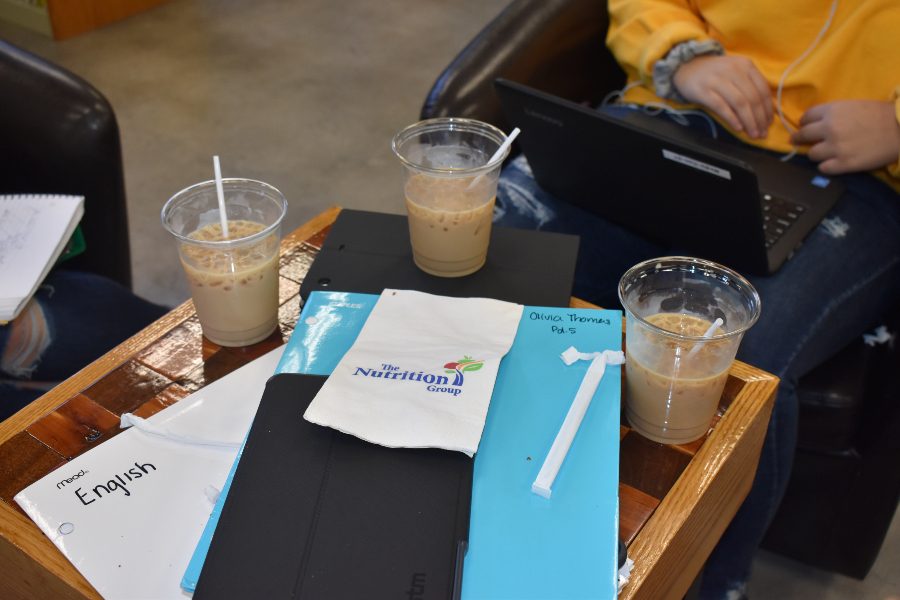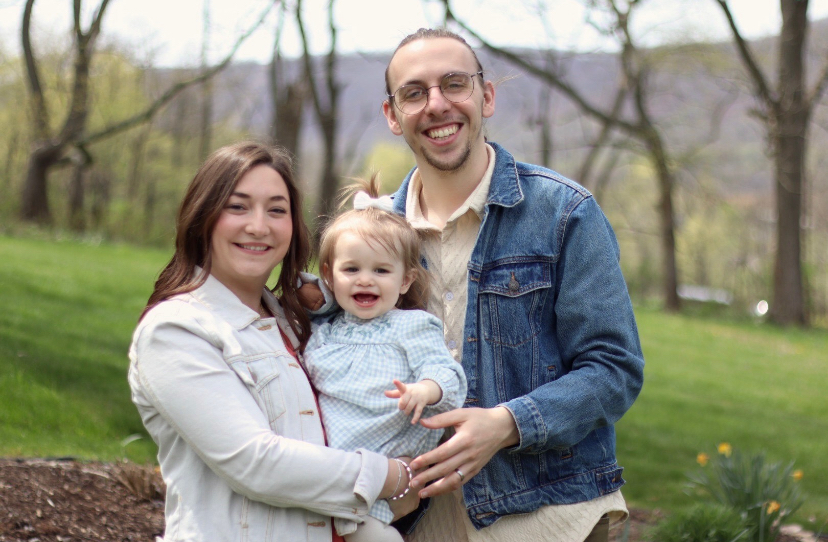Hyped over energy drinks
B-A students look for balance with access to sugary and caffeinated drinks
Coffee and sugary drinks are available in the media center and cafeteria.
November 7, 2018
Bellwood-Antis High School students were thrown a curve ball a few weeks ago when Mr. Tim Trexler put up a sign saying no more coffee would be served in the media center.
The announcement caused widespread panic, even though it was all a hoax. Mr. Trexler wanted to spark kids’ interest in reading the news article that was posted under the sign, an article that covered the banning of coffee in all schools in South Korea.
While it was all in good fun, it highlighted the growing presence of caffeinated and sugary drinks in the high school, which many students said they need during the school day to keep going.
“I feel like it (would be) a bad idea to take away coffee … I for sure need it,” said senior Trentin Whaley.
Chances are unlikely B-A will be joining South Korea anytime soon. Both coffee and sugary drinks, beverages that were not sold in school 10 years ago, have become a large part of the drinking options in the media center and cafeteria, and they come with a cost. In the media center alone, cold brew coffee sells for $1.50, while hot coffee and tea are $1.10.

Students in the media center enjoy iced coffee as they complete their homework.
Caffeine is most commonly used to improve mental alertness and is the most widely used legal psychoactive substance in the world. In a simple 8-ounce cup of coffee there is 95 mg of caffeine.
Some B-A students have up to two study halls a day, which means there are students who go to the media center for their 8-ounce coffee twice everyday in order to push through the end of school. Studies have shown that high doses of caffeine can create physical, psychological, and performance effects, but Mr. Trexler said he’s seen no negative side effects himself.
“I haven’t noticed a difference in behaviors during the time that they spend in the media center,” he said. “Coffee or caffeinated drinks take about 40-60 minutes to affect the body. Usually the students that order the drinks are gone by the time it would affect their system.”
Superintendent Dr. Thomas McInroy said that having a place like the media center is a big responsibility, as are all the luxuries that come with it.
“The center was opened as a place where students can act like adults. We set it up almost like a student union,” he said. “We believe that we should treat and teach the students with respect and like young adults.”
Over-consumption of caffeine can have many harmful side effects, especially for teenagers. The Mayo Clinic reported that consuming more than 500-600 mg of caffeine a day may lead to insomnia, nervousness, restlessness, irritability, an upset stomach, a fast heartbeat and even muscle tremors.
For his part, high school principal Richard Schreier hasn’t gotten any reports as a result of these drinks and other items.
“It has never came to my attention that kids have been effected. I haven’t gotten any student reports.” said Mr. Schreier
However, caffeine has been found to significantly decrease reaction times in auditory and visual choice tasks when it was used at doses of as little as 32 mg and as great as 600 mg.
Meanwhile, in the high school cafeteria students used to either buy milk, chocolate milk, or water; now, they can buy an assortment of different sugary and caffeinated beverages. One of the drinks with the highest amounts of both caffeine and sugar is Mountain Dew Kickstart, which is available during lunch.
Besides the 92 mg of caffeine per 16-oz. can, Mountain Dew Kickstart has a dose of Vitamin C and B vitamins as well. While the drink contains 10% juice along with coconut water and just 60 calories per can, it’s still 12 mg higher in sugar than your average can of RedBull and 6 mg higher than a can of Monster Energy (though at different fluid oz.).

Dr. McInroy said the availability of sugary drinks was one more way students are given responsibility to make good eating decisions.
At the same time, said Mr. Schreier, all of the drinks have passed government standards.
“I believe that these items are approved through the FDA, and its not like these are non-regulated Redbull and Monster drinks.” said Mr. Schreier
There isn’t any major concern in selling the drinks because “everything we sell is Smartsnack approved. Drinks like coffee are for high school students only and not permitted by middle school students,” said Food Services Director Mrs. Danko.
“Ever since I’ve been here we’ve been selling water and Gatorade, but since we opened the media center there was the shift all around in the high school, selling coffee and other drinks,” she said.
Considering the effects of caffeinated and sugary drinks you might think that parents would complain, but no, said Mrs. Danko.
“There really haven’t been any complaints that I can think of. We manage it by only allowing high school students buy these items,” she said.
Things have worked out just a little differently at Myers Elementary, which spurred some changes in the daily food service routine, Dr. McInroy said.
“Last year in the elementary school we had high-sugar breakfast on Fridays that would cause the students to be overly hyper and would cause problems. We have since changed it for this year, but we are heavily regulated across the district and must balance the items even if we don’t like them,” said Dr. McInroy. “Some of the items have more sugar then we want, some have more caffeine, and we have to balance these items.”
Dr. McInroy said the reality of federal nutrition regulations has changed the game.
In a way, he noted, the balance of nutrition is like the balance of life. You can’t go all in on anything; instead you must maintain equilibrium.
“Like everything in life it’s a balance: what students want and like versus us hitting the right nutrition content. The new reality of your time versus mine is we have to balance it all,” said Dr. McInroy.







